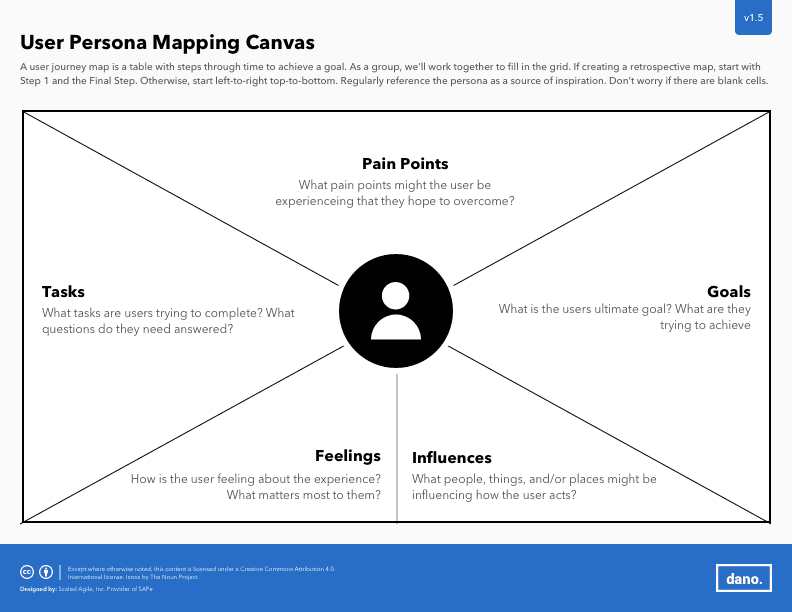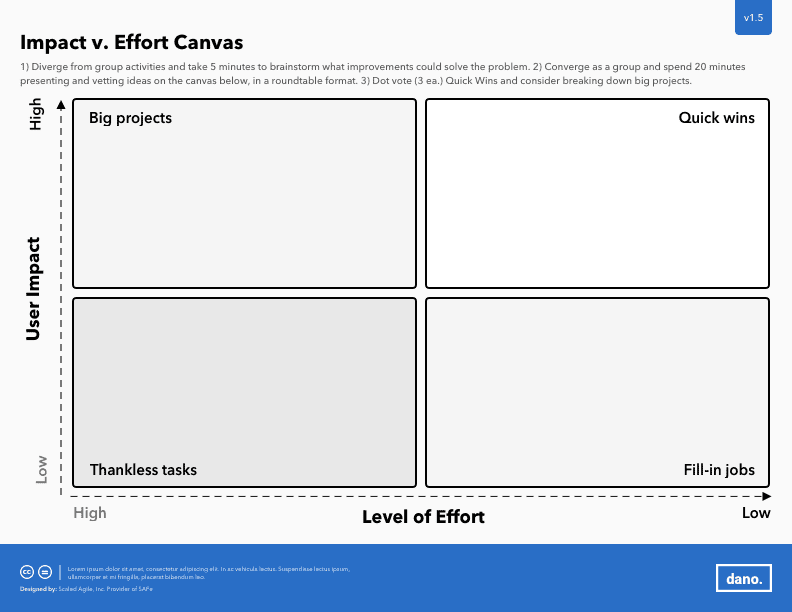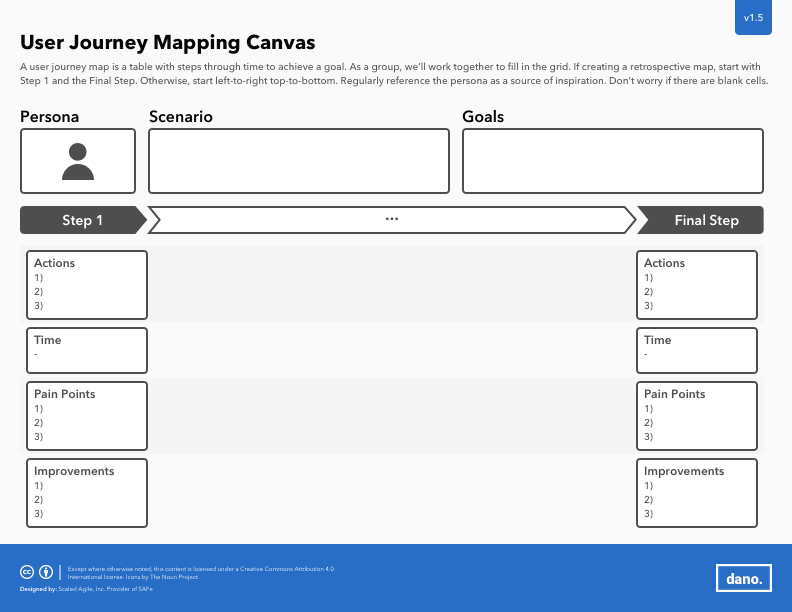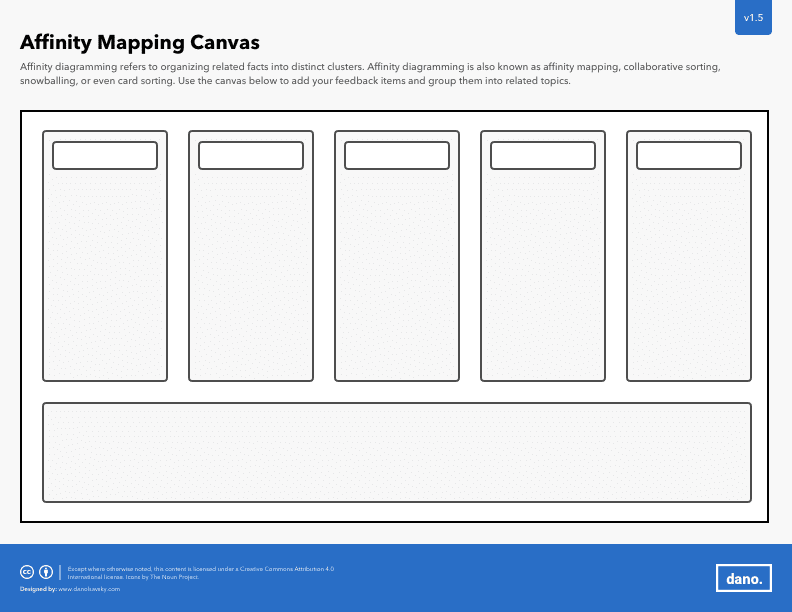Persona Mapping Canvas
Design Thinking Toolkit Series | October 6th, 2019

A user persona mapping canvas is a visual tool used to understand and represent the needs, motivations, and behavior of a target user group. User personas are fictional representations of the target audience, based on data and research about their behaviors, goals, and motivations. By creating user personas, organizations can gain a deeper understanding of their target audience, and create products, services, or experiences that meet their needs and expectations.
A user persona mapping canvas typically includes information about a user persona’s demographic information, behavior patterns, pain points, and goals. It also includes information about the touchpoints and channels that the persona interacts with, and the motivators and barriers that influence their behavior.
The user persona mapping canvas is created by conducting research and gathering data from the target audience, either through surveys, interviews, or other methods. The data is then used to create a visual representation of the user persona, including demographic information, behavior patterns, pain points, and goals.
Once the user persona mapping canvas has been created, organizations can use it to inform product and service design, as well as marketing and communication strategies. By understanding the user persona’s needs, motivations, and behavior, organizations can create experiences that are tailored to their target audience and that meet their needs and expectations.
In conclusion, a user persona mapping canvas is a valuable tool for organizations that want to understand their target audience and create products and services that meet their needs. By using this tool, organizations can gain insights into the target audience and create experiences that drive customer engagement, satisfaction, and loyalty.


